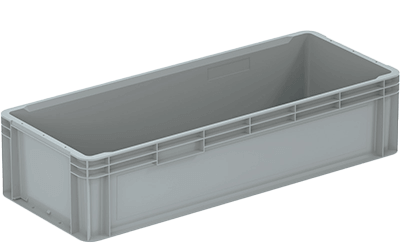What Is a Stackable Container?

Stackable containers are specifically designed for efficient storage and transportation of industrial products. Unlike regular containers, they can be securely stacked on top of each other, even when empty, to conserve space. They are designed to partially fit into one another for stable stacking.
There are also stacking containers, designed for use while stacked, and some models combine both stacking and stackable features.
Uses of Stackable Containers
These containers are primarily utilized in factories for storing and transporting parts. There are two principal types: box type and mesh type. The box type is suited for industrial parts, while the mesh type is favored for perishable items and daily-delivery foods.
Some stackable containers are designed for high-volume stacking and can slide into a lower tier for efficient space utilization.
Features of Stackable Containers
Materials like polypropylene or recycled resin are commonly used for these containers due to their durability and lightweight, essential for repeated use. To meet the practical needs of various industries, they come in different shapes, usually narrower at the bottom for stacking, and are available in a range of colors to facilitate easy identification.
They are offered in multiple sizes, often designed for compatibility with industrial pallets and food carts. Mesh-type containers, also known as food crates, are becoming standardized to enhance operational efficiency in the food industry.
Apart from regular stackable containers, there are folding containers that can be collapsed to save even more space when not in use. Unlike folding containers that require assembly, stackable containers are ready for immediate use.